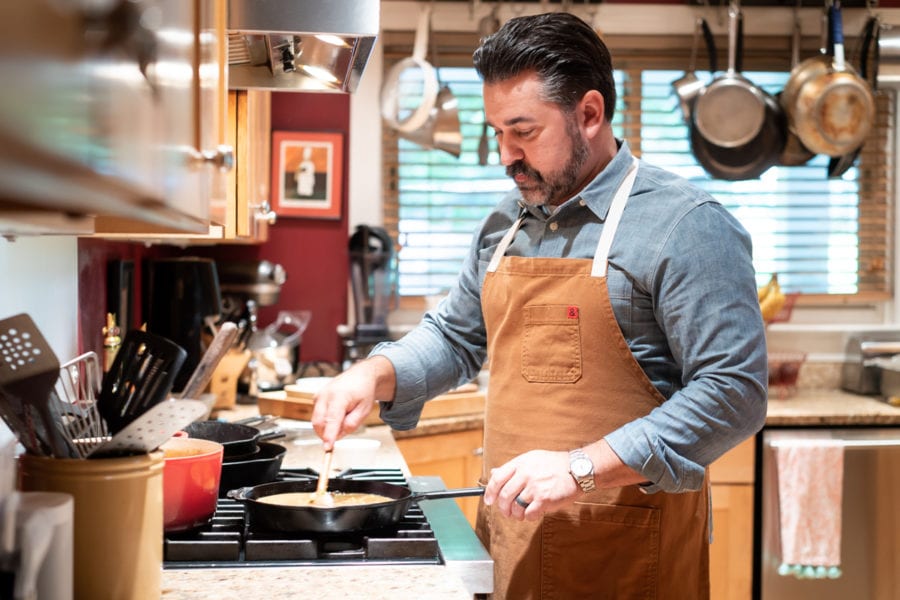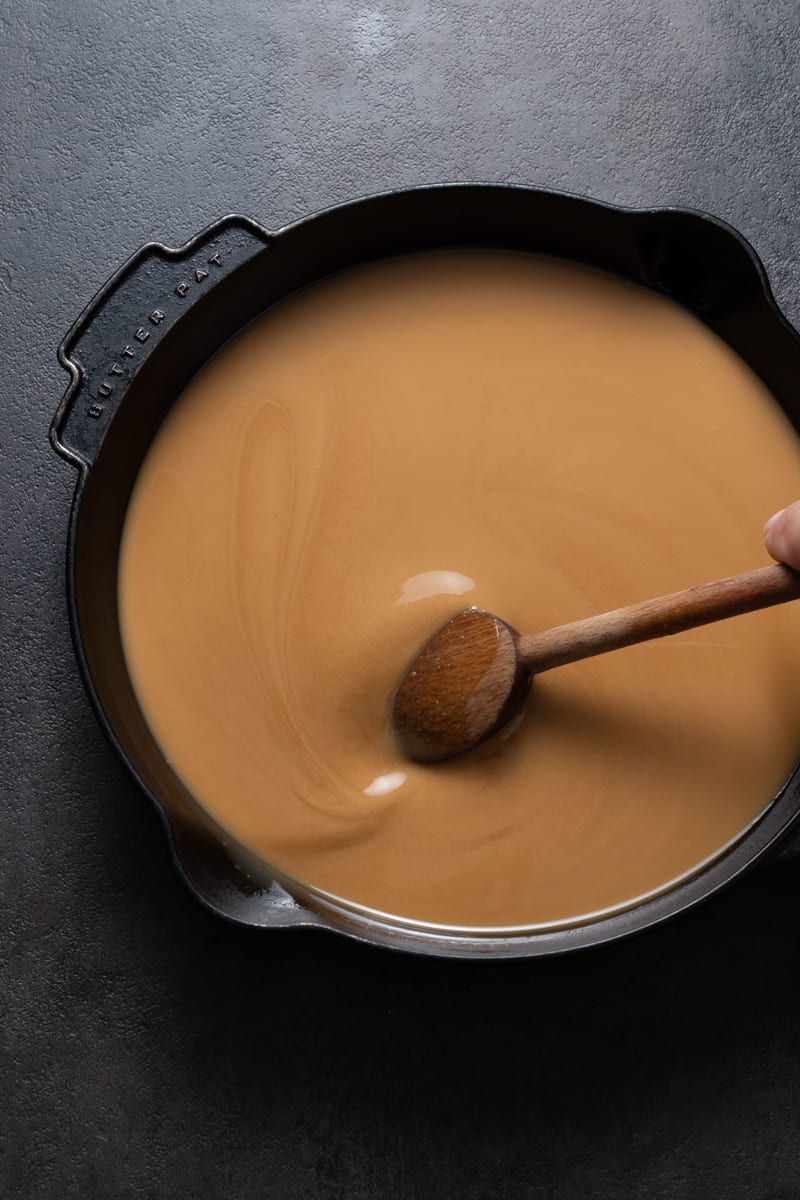Roux demands respect. It may be a simple marriage of flour and fat, but the classic French technique requires constant attention (read: stirring) and ample time to darken in hue. In the South, it’s the soul of gumbo. Every pot of the hearty stew begins the same way: with the methodical stirring of roux. Those made for seafood gumbo, a go-to in New Orleans, often use butter and are light in color, so as not to overpower the fish. When it comes to gumbos studded with game meats (commonplace in Cajun Country), cooks typically darken their roux to a deep chocolate that complements rich proteins—these can take up to an hour and require oil with a high smoke point. “But there are always exceptions,” says David Guas, a New Orleans native who’s brought the flavors of his home to the Washington, DC, area.
Safe to say, Guas has cooked his share of roux—and knows its nuances. As molten fat isn’t something you can taste as you go, a cook must understand how to read roux’s color for flavor. Nailing the perfect hue for gumbo is also knowing to stop a little early, Guas says. The holy trinity (celery, bell pepper, onion) cooks in the roux, deepening its color further. “It comes with experience,” Guas says. “No one sticks a thermometer in roux—that’s sacrilege.” He follows the sage advice of his Aunt Boo in Abbeville, Louisiana. “She said, ‘Your roux should be like the bayou after a heavy rain,’” he says. “Once the mud and silt gets kicked up you get a muddy color—that’s the color you should go for.”

David Guas’ Turkey and Andouille Gumbo
share
trending content
-
Recipes From Our Summer Issue
by TLP Editors -
Elevate Your AWESOME with an Alpharetta Music Getaway
by TLP's Partners -
9 Noteworthy Tennessee Restaurants | Listen
by Margaret Littman -
Outdoor Adventure and Historic Charm Awaits in St. Martin Parish
by TLP's Partners -
6 Things to Do Beyond Golf in Pinehurst
by TLP's Partners
More From At the Table
-
High Tea, Southern Style
-
10 Leftover Recipes To Clean Out Your Fridge
-
Country Captain Shrimp and Grits
-
10 Nonalcoholic Drinks for Dry January
-
Our Most Popular Recipes of 2023





